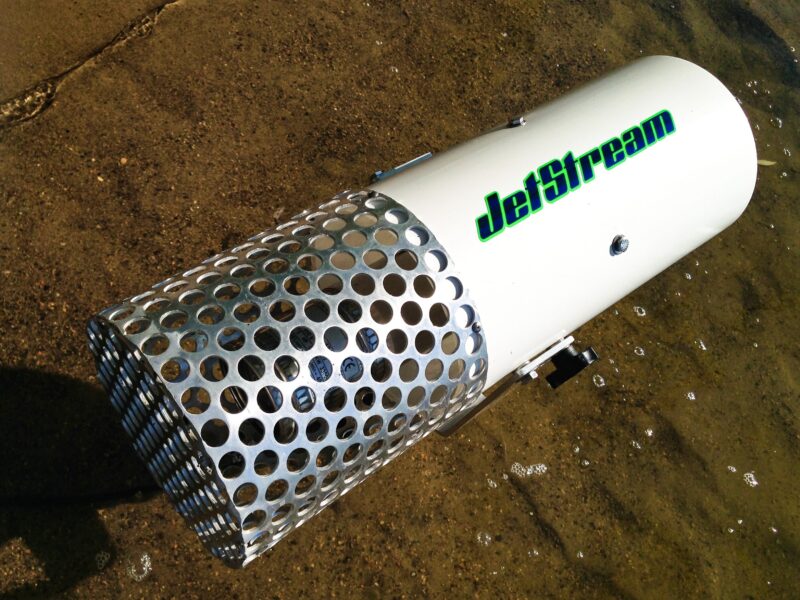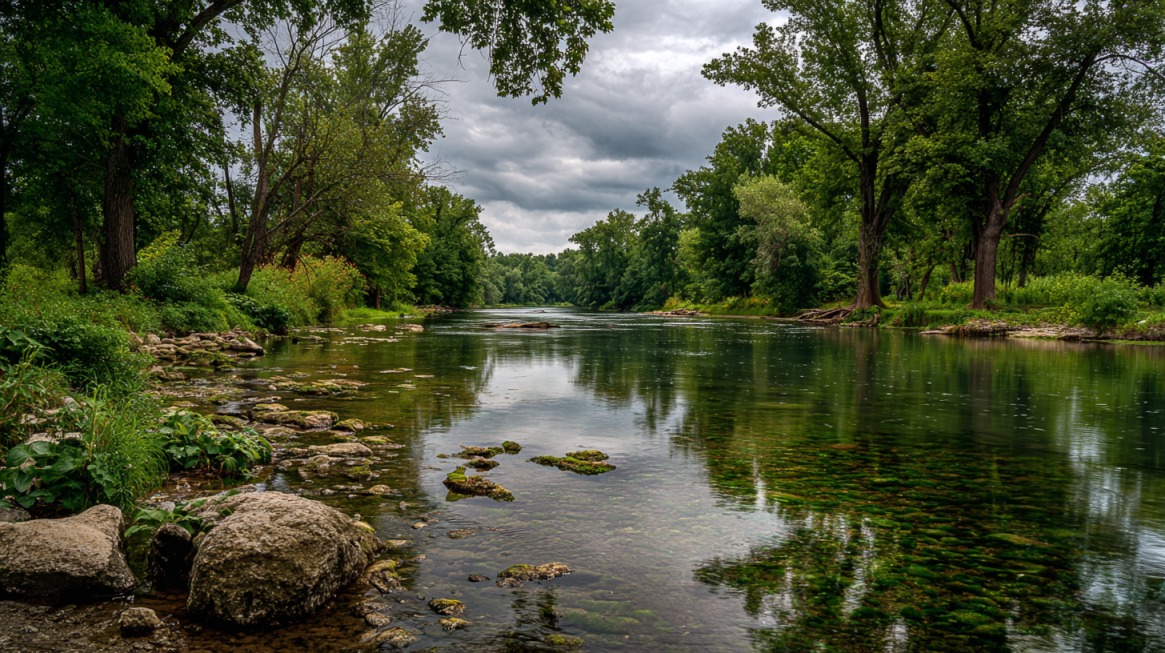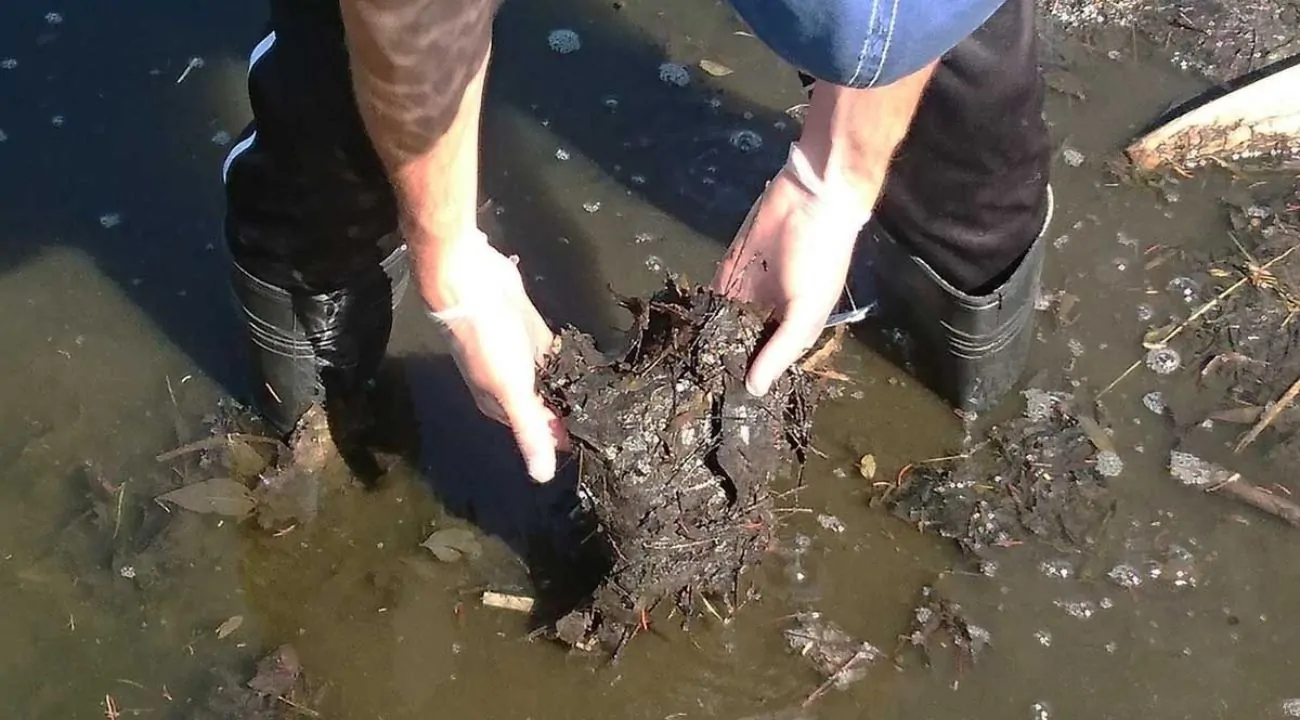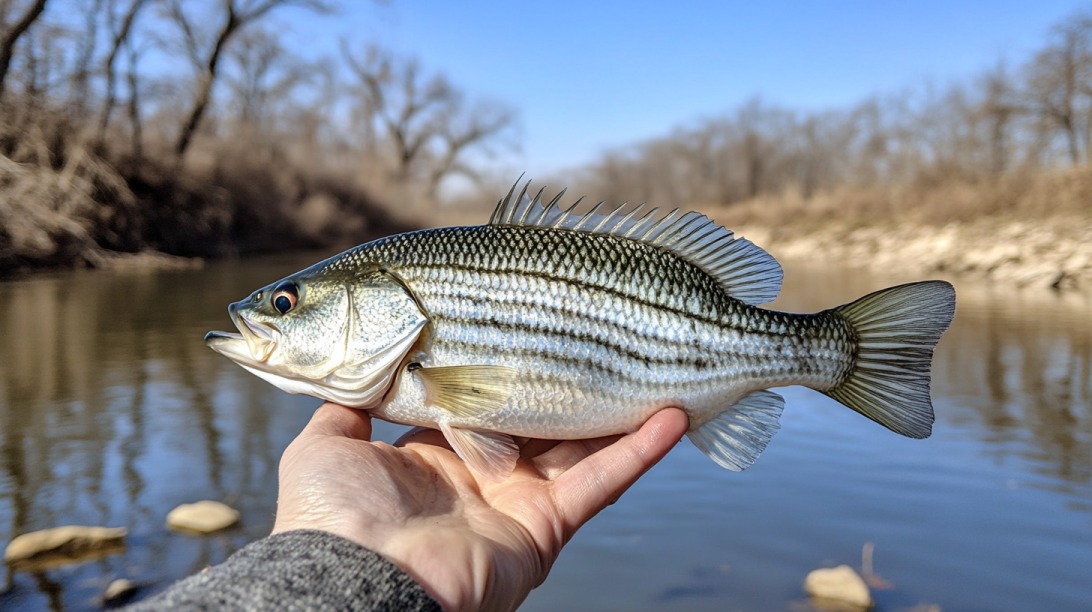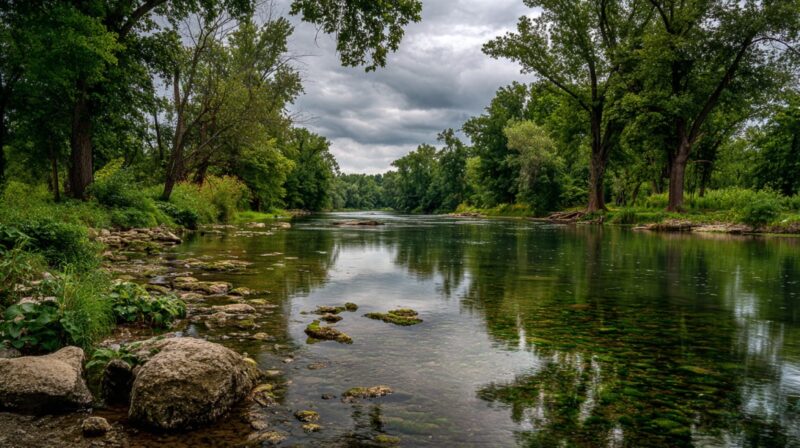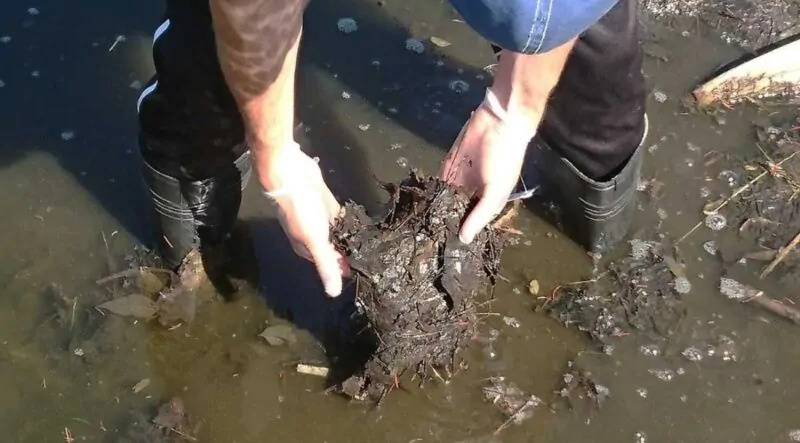
Share Post:
Muck refers to the soft, gooey, dark sediment that settles at the bottom of lakes, ponds, and other bodies of water. It’s composed primarily of decomposed organic matter such as dead algae, plant debris, and fish waste.
Muck reduces oxygen levels, encourages weed overgrowth, and releases harmful nutrients like phosphorus and nitrogen back into the water, fueling algal blooms.
Dredging is one way to address muck buildup, but it is often prohibitively expensive, highly disruptive to aquatic ecosystems, and typically requires permits and heavy machinery.
In most cases, dredging replaces one problem with another, leaving homeowners or lake managers searching for less invasive and more cost-effective strategies.
Removing muck without dredging is possible by combining biological, mechanical, and preventative tools that are both sustainable and safe for aquatic environments.
Table of Contents
ToggleBiological Treatments: Harnessing Nature
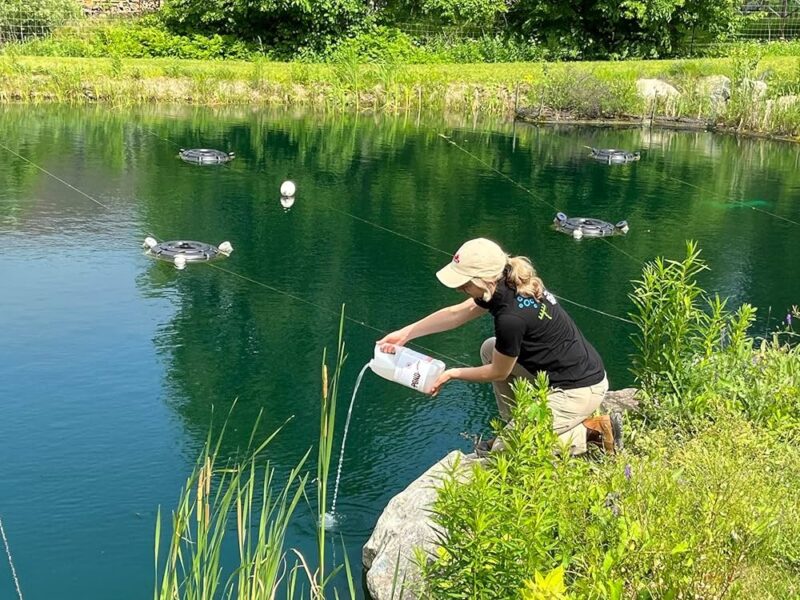
Muck removal doesn’t always require heavy equipment or aggressive disruption.
Nature offers solutions that are both effective and environmentally responsible.
Two of the most promising biological strategies include beneficial bacteria treatments and nanobubble technology.
Beneficial Bacteria and Muck Pellets
Naturally occurring microbes can be harnessed to decompose accumulated organic matter in:
- Ponds
- Lakes
- Canals
Specially formulated muck pellets contain concentrated bacteria strains that consume sludge and convert waste into harmless nitrogen gas.
Safe for aquatic life and pets, they offer a practical solution for eco-conscious management.
Application is straightforward. Pellets are scattered across targeted areas such as docks, swim zones, or shoreline buildup.
Warmer months bring heightened bacterial activity, so most treatments are scheduled every month during spring through fall.
Visible improvement occurs in just a few weeks, as muck layers begin to fade and odors diminish.
Benefits of beneficial bacteria and muck pellets:
- Break down organic matter without harming wildlife
- Reduce sediment thickness naturally over time
- Help neutralize odors caused by anaerobic decay
- Safe for recreational use immediately after application
- Lower long-term muck accumulation through routine use
Nanobubble Technology
Nanobubbles are microscopic oxygen-filled spheres introduced into water through advanced injection systems.
Unlike larger bubbles that rise and burst at the surface, nanobubbles remain suspended throughout the water column and reach the sediment layer, releasing oxygen gradually over time.
Increased oxygen at the bottom stimulates aerobic microbial activity, accelerating the decomposition of muck. As a result, internal nutrient loading is reduced and water clarity improves.
Enhanced oxygenation also discourages foul-smelling anaerobic zones, shifting conditions toward a healthier aquatic balance.
Key effects of nanobubble technology:
- Boosts microbial digestion rates
- Lowers phosphorus and nitrogen recycling
- Improves transparency and water quality
- Suppresses algae by limiting available nutrients
- Reduces odor through increased aerobic activity
Aeration Systems
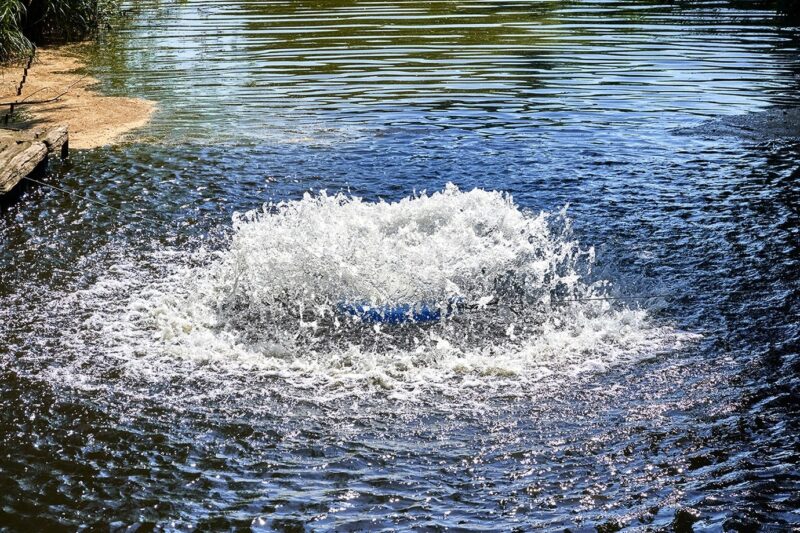
Managing muck buildup successfully depends on improving oxygen levels in the water, especially near the bottom where decomposition slows down.
Aeration systems offer an efficient way to boost oxygen, promote microbial activity, and improve overall water quality.
Two popular options include diffused aeration systems and surface fountain aerators, each with distinct benefits and ideal conditions.
Diffused Aeration
Diffused aeration pumps compressed air through weighted tubing and diffusers placed at the bottom of a pond or lake.
As bubbles rise, they circulate the water column and deliver oxygen to the lower layers where muck tends to accumulate.
Increased oxygen levels support aerobic bacteria, which break down organic matter faster and more completely than anaerobic bacteria.
The process also suppresses the production of hydrogen sulfide, the gas responsible for unpleasant, sulfur-like odors in stagnant water.
Benefits of diffused aeration include:
- Promotes aerobic bacterial growth at the sediment layer
- Enhances natural decomposition of organic material
- Reduces hydrogen sulfide and foul smells
- Improves water circulation and mixing
- Minimizes stagnation in deeper zones
Surface Fountain Aerators
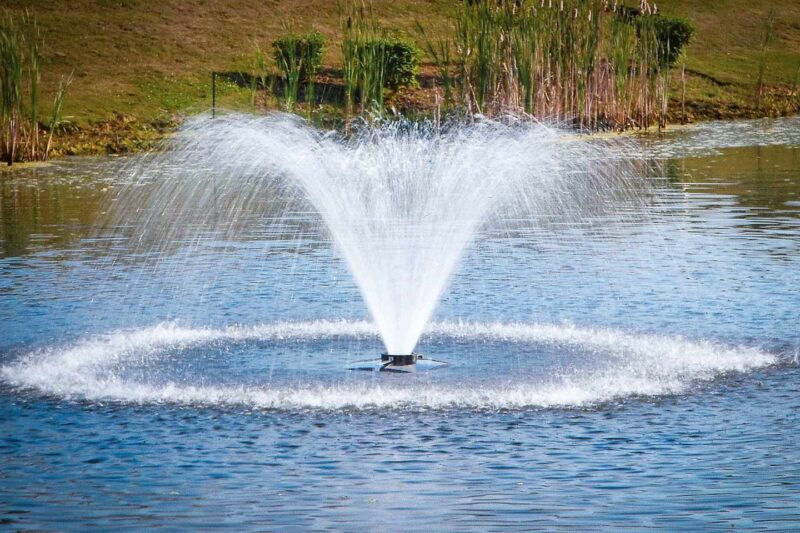
Surface fountain aerators create a dynamic visual display while improving oxygen exchange.
These systems spray water upward into the air, which then splashes back and reoxygenates the surface layer.
This oxygen is gradually distributed through circulation, enhancing biological activity near the top and mid-levels of the water body.
Fountains work best in shallow ponds or as a supplement to diffused aeration in larger or deeper environments. They help break up algae mats, reduce mosquito breeding, and keep water moving to prevent scum buildup.
Key benefits of surface fountain aerators:
- Adds oxygen to upper and mid-level water layers
- Improves circulation near the surface
- Disrupts algae blooms and deters mosquito activity
- Enhances aesthetic value of ponds and lakes
- Complements bottom-based systems for full-coverage aeration
Mechanical Alternatives to Dredging
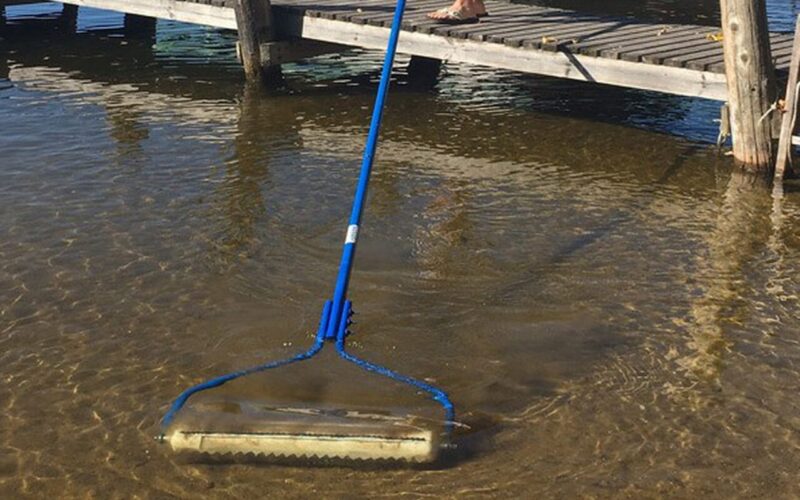
When dealing with muck removal, not every situation calls for heavy equipment or invasive methods.
For those seeking practical, manageable solutions without disrupting the aquatic environment, mechanical tools and technologies offer dependable results.
Two key options, manual tools and powered systems, serve different scales and goals, and both deserve attention for maintaining cleaner shorelines.
Hand Tools and Rakes
Manual methods work best for targeted cleanup around small ponds, beaches, and waterfronts. Homeowners often rely on simple tools to tackle surface muck and prevent it from becoming a larger problem over time.
Benefits and features of using hand tools include:
- Affordability: Muck rakes and pond shovels are inexpensive and readily available
- Direct results: Immediate removal of visible debris like algae mats and decomposing leaves
- Low impact: Minimal disturbance to fish and aquatic habitats
- No special equipment required: Ideal for weekend projects or small-scale maintenance
Although this method takes physical effort and commitment, it allows for localized control.
While it won’t penetrate compacted bottom layers, hand removal keeps docks, swim zones, and high-use areas clean and accessible.
Innovative Technologies (e.g., Aqua Thruster)
For larger or more problematic zones, mechanical propulsion systems like an aqua thruster provide a proactive alternative.
Rather than removing muck outrightan , aqua thruster works by creating strong horizontal water movement that keeps sediment suspended and away from the shoreline.
Key advantages of aqua thruster systems include:
- Continuous water movement: Reduces buildup by preventing organic debris from settling
- Improved water clarity: Keeps zones near docks and beaches clean and safe
- Algae control: Minimizes stagnant conditions that fuel unwanted growth
- Odor reduction: Limits anaerobic conditions that lead to unpleasant smells
Aqua thruster proves especially useful for properties with ongoing muck accumulation in shallow areas. By operating consistently during the active season, it serves as both a preventative and maintenance tool.
While it won’t remove compacted sediment that’s already set, it plays a critical role in stopping future layers from forming.
Preventative Measures
Preventing muck buildup is often more manageable than trying to remove it after layers have formed. Establishing buffers and reducing nutrient input are essential for long-term control.
Shoreline vegetation buffers act as natural filters. Native grasses, shrubs, and plants trap sediment, fertilizers, and other pollutants in runoff before they enter the water. These barriers also reduce erosion, stabilizing banks and minimizing soil input that contributes to muck.
Pond dye can be used to limit sunlight penetration, reducing photosynthesis for algae and aquatic weeds. With less organic growth, there is less material to decompose and contribute to muck formation.
Installing pond netting helps catch falling leaves and floating debris before they reach the bottom. Particularly during fall, covering areas prone to heavy leaf drop can make a significant difference.
Regular removal of grass clippings, pet waste, and other yard debris near shorelines is critical. Nutrient-rich waste feeds algae and aquatic plants, which eventually die and settle at the bottom. Simple maintenance steps reduce the organic load and extend the time between treatments or equipment use.
DIY vs. Professional Services
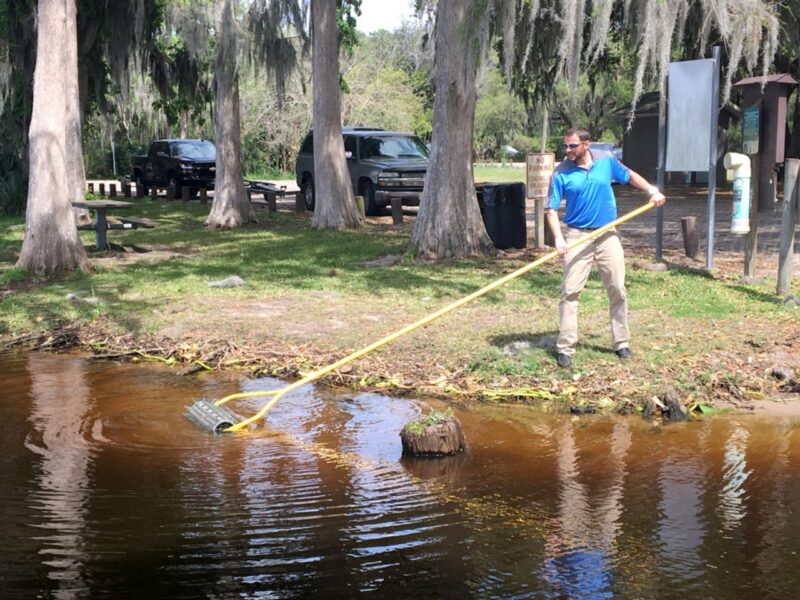
Managing muck on your own can save money and provide immediate satisfaction. DIY options like muck pellets, rakes, pond dye, and aqua thruster are accessible and effective for small to medium-sized areas. Many homeowners enjoy the hands-on approach, especially when treating their own docks or private beaches.
However, larger water bodies or thick muck layers may require professional evaluation. Specialists bring experience, laboratory testing, and access to more advanced equipment. They can identify underlying issues such as high phosphorus levels or poor oxygenation that DIY methods might miss.
Hiring professionals becomes necessary when muck depth exceeds safe raking limits, when multiple treatment methods are needed simultaneously, or when equipment installation like aeration systems requires precision.
Cost varies by project size, but long-term savings come from using the right strategy the first time.
Choosing between DIY and expert help depends on the severity of the problem, your available time, and your comfort with maintaining equipment.
Summary
Combining biological tools like muck pellets and nanobubbles with mechanical options such as aerators and aqua thruster creates a powerful and sustainable approach to muck removal.
Preventative actions like vegetation buffers and debris control reinforce those efforts, helping water bodies maintain balance over time.
Avoiding dredging is not only possible but often preferable when consistent, eco-conscious practices are in place. Long-term results depend on regular attention, seasonal treatment, and proactive maintenance.
Related Posts:



